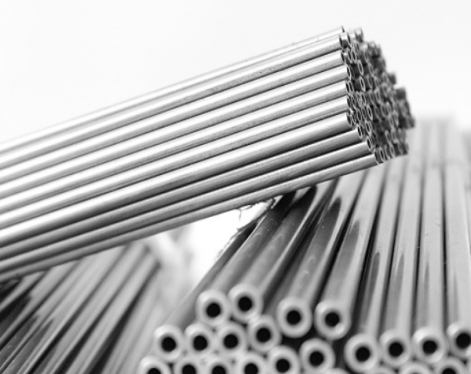Large-diameter steel pipes have been widely recognized by people, not only have the same service life as construction large-diameter steel pipes, but the materials are also relatively safe. Large-diameter steel pipes are formed by chemical reaction using high-functional polyether polyol and polyisocyanate as raw materials.
The scope of application of large-diameter steel pipes
Large-caliber steel pipe has the advantages of light bulk density and high strength. It has excellent characteristics such as heat insulation, sound insulation, flame retardant, cold resistance, corrosion resistance, non-water absorption, and convenient construction. Heat insulation and waterproof plugging have become indispensable products in the industry. Large-diameter steel pipes are suitable for heat preservation and cooling projects of indoor and outdoor pipelines, central heating pipelines, central air-conditioning pipelines, chemical, pharmaceutical and other industrial pipelines. As an excellent thermal insulation product, it has been developed rapidly, and its application range has become more and more extensive. Because of its simple construction and remarkable energy-saving and anti-corrosion effect, it has been widely used in various heating pipelines.
How to choose large diameter steel pipe
Select the high-temperature type direct-buried steam composite pipe. At present, there are many manufacturers in the country, and there is no unified standard. As a user, when purchasing, you should pay attention to the thermal conductivity, compressive strength, heat resistance, and water absorption of the thermal insulation material in the composite thermal insulation pipe. Generally speaking, hard thermal insulation materials should be selected, the thermal conductivity should be small, and the greater the compressive strength, the better, because the steam main pipe slides in the thermal insulation layer. The heat resistance and water absorption of large-diameter steel pipes are mainly considered to be inorganic hydrophobic insulation materials. When the temperature of the steam pipe is 250 to 300℃, the outer protective layer should consider the steel casing, because the plastic casing steel and the glass fiber reinforced plastic casing steel outer protective layer operate at temperature for a long time, it is easy to age, crack and see water, causing the entire pipeline to burst for a long time. And other phenomena. When laying high-temperature direct-buried steam composite pipes, trenches are excavated. When the bearing capacity of the soil at the bottom of the trench is less than or equal to 80kpa, the foundation should be treated. Generally, a 150mm thick c15 plain concrete layer should be poured.
Prevent uneven foundation settlement and cause pipeline fracture. The high-temperature large-diameter steel pipe is composed of a steel pipe, a glass fiber reinforced plastic inner sheath, and a glass fiber reinforced plastic outer shell. The utility model effectively solves the problems of heat preservation, sliding lubrication and waterproofing of exposed pipe ends of large-caliber steel pipes for high-temperature heat transmission at 130 DEG C to 600 DEG C in central heating in large cities and towns.
The scope of application of large-diameter steel pipes
Large-caliber steel pipe has the advantages of light bulk density and high strength. It has excellent characteristics such as heat insulation, sound insulation, flame retardant, cold resistance, corrosion resistance, non-water absorption, and convenient construction. Heat insulation and waterproof plugging have become indispensable products in the industry. Large-diameter steel pipes are suitable for heat preservation and cooling projects of indoor and outdoor pipelines, central heating pipelines, central air-conditioning pipelines, chemical, pharmaceutical and other industrial pipelines. As an excellent thermal insulation product, it has been developed rapidly, and its application range has become more and more extensive. Because of its simple construction and remarkable energy-saving and anti-corrosion effect, it has been widely used in various heating pipelines.
How to choose large diameter steel pipe
Select the high-temperature type direct-buried steam composite pipe. At present, there are many manufacturers in the country, and there is no unified standard. As a user, when purchasing, you should pay attention to the thermal conductivity, compressive strength, heat resistance, and water absorption of the thermal insulation material in the composite thermal insulation pipe. Generally speaking, hard thermal insulation materials should be selected, the thermal conductivity should be small, and the greater the compressive strength, the better, because the steam main pipe slides in the thermal insulation layer. The heat resistance and water absorption of large-diameter steel pipes are mainly considered to be inorganic hydrophobic insulation materials. When the temperature of the steam pipe is 250 to 300℃, the outer protective layer should consider the steel casing, because the plastic casing steel and the glass fiber reinforced plastic casing steel outer protective layer operate at temperature for a long time, it is easy to age, crack and see water, causing the entire pipeline to burst for a long time. And other phenomena. When laying high-temperature direct-buried steam composite pipes, trenches are excavated. When the bearing capacity of the soil at the bottom of the trench is less than or equal to 80kpa, the foundation should be treated. Generally, a 150mm thick c15 plain concrete layer should be poured.
Prevent uneven foundation settlement and cause pipeline fracture. The high-temperature large-diameter steel pipe is composed of a steel pipe, a glass fiber reinforced plastic inner sheath, and a glass fiber reinforced plastic outer shell. The utility model effectively solves the problems of heat preservation, sliding lubrication and waterproofing of exposed pipe ends of large-caliber steel pipes for high-temperature heat transmission at 130 DEG C to 600 DEG C in central heating in large cities and towns.









